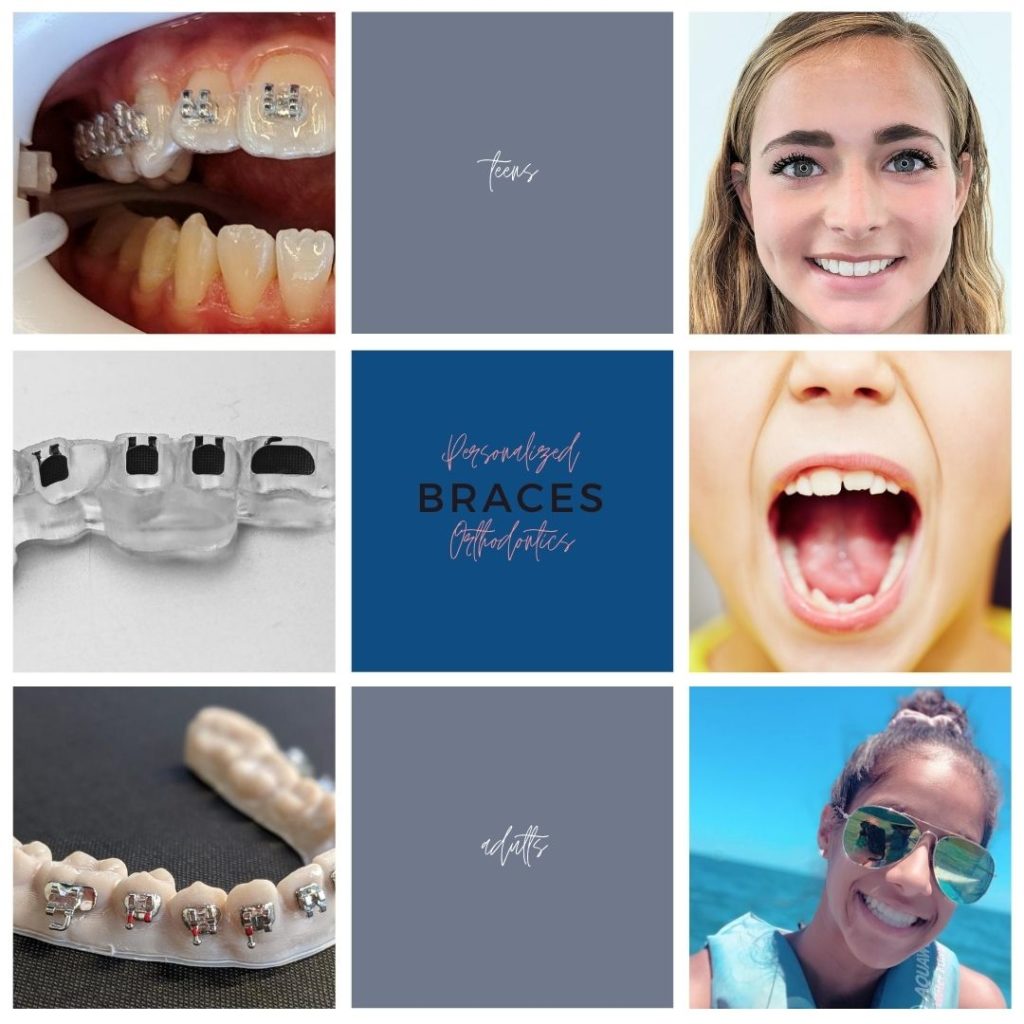Legacy Orthodontics Fundamentals Explained
Legacy Orthodontics Fundamentals Explained
Blog Article
The Ultimate Guide To Legacy Orthodontics
Table of ContentsThe Best Strategy To Use For Legacy OrthodonticsThe Legacy Orthodontics IdeasRumored Buzz on Legacy OrthodonticsMore About Legacy OrthodonticsThe Greatest Guide To Legacy Orthodontics
At Advanced Orthodontics, we give individuals with a alternative therapy experience. On top of that, we offer adjustable treatment schedules, versatile repayment choices and a fun, pleasurable experience. leesburg braces. Call ( 480) 357-4900 today to find out more and schedule an appointment.An orthodontist is a dentist trained to detect, avoid, and deal with teeth and jaw abnormalities. They remedy existing conditions and are educated to identify issues that may develop in the future. Orthodontists collaborate with people of all ages, from youngsters to grownups. People frequently associate a perfect smile with great wellness.
Malocclusion, or misaligned teeth, can lead to oral problems, consisting of tooth decay, gum tissue disease, and tough or uncomfortable eating. Not every person is birthed with straight teeth. If you have a negative bite or big spaces in between your teeth, you may want to speak with a dental practitioner concentrating on orthodontic treatment.
Indicators on Legacy Orthodontics You Need To Know
( Image Credit Scores: DigitalVision/Getty Images) Orthodontists use fixed and detachable dental devices, like dental braces, retainers, and bands, to change the position of teeth in your mouth. Orthodontic treatment is for oral abnormalities, consisting of: Crooked teethBite troubles, like an overbite or an underbiteCrowded teeth or teeth that are too far apartJaw misalignmentThe goal of orthodontic therapy is to improve your bite.
A healthy and balanced bite guarantees you can eat, chew, and talk effectively. While you may assume of orthodontists as generally for children or young adults that need dental braces, they can correct dental troubles at any age. Orthodontists participate in university, oral college, and orthodontic college. After college graduation, they spend 2 or 3 years in an orthodontic residency program.
All orthodontists are dental professionals, but not all dental experts are orthodontists. Orthodontic residency programs use intensive, concentrated instruction for dental professionals. They focus on 2 areas: How to correctly and securely move teeth Just how to effectively guide growth in the teeth, jaw, and faceOnce an orthodontist has completed training, they have the option to come to be board licensed.
The Ultimate Guide To Legacy Orthodontics
Imbalance, or malocclusion, is the most typical factor individuals see an orthodontist. It is hereditary and is the result of size distinctions in between the top and lower jaw or in between the jaw and teeth. Malocclusion results in tooth congestion, an irregular jaw, or uneven bite patterns. Malocclusion is typically treated with: Your orthodontist attaches metal, ceramic, or plastic square bonds to your teeth.
Some people need a headgear to assist move teeth into line with pressure from outside the mouth. A retainer is a custom gadget that keeps your teeth in area.
They can develop additional area in the mouth without having to pull teeth. Orthodontists make use of cables, medical screws, or plates to support your jaw bone.
You may need to see an orthodontist if you have: Crowding or not adequate area for all of your teethOverbite, when your top teeth come by your bottom teethUnderbite, when your bottom teeth are too far forwardSpacing or concerns with gapsCrossbite, which is when your top teeth fit behind your base teeth when your mouth is closedOpen bite or a vertical space in between your front base and upper teethMisplaced midline, when the center of your base and top teeth don't align Correcting an oral malocclusion can: Make biting, chewing, and speaking easierImprove the symmetry of our face and your overall appearanceEase pain from temporomandibular joint disordersSeparate your teeth and make them less complicated to clean, assisting avoid dental cavity or tooth cavities It's usually a dental expert who first notices misaligned teeth during a routine test.
Legacy Orthodontics for Dummies

During your first orthodontic assessment, you'll likely have: A dental examPhotos taken of your face and smileDental X-raysPanoramic (360 degree) X-rays of your face and headImpressions to produce mold and mildews of your teethThese examinations will assist your orthodontist recognize how to wage your therapy. clear braces. An orthodontist is a dental practitioner that's had training to treat your teeth and jaw
Orthodontists might carry out surgical treatment, exams,X-rays,and more to help you attain a more comfortable, healthier smile. An orthodontist is concentrated on your bite, so something like a chipped tooth would certainly be dealt with by a dental expert. Orthodontists are dentists but not all dental professionals are orthodontists. Orthodontists are concentrated on your bite, or the method your teeth meshed, and the straightness of your teeth.
Ever asked yourself just how celebs always appear to have completely aligned teeth? Orthodontists are oral experts that focus on fixing irregularities in the teeth and jaws.
Examine This Report on Legacy Orthodontics

, orthodontists have a varied toolkit at their disposal. These reliable dental braces use a system of braces adhered to the teeth and attached by cords.
These removable trays are custom-made to gradually change the teeth's position. In situations of narrow jaws, palatal expanders can be used to develop space for appropriate tooth positioning.
Report this page